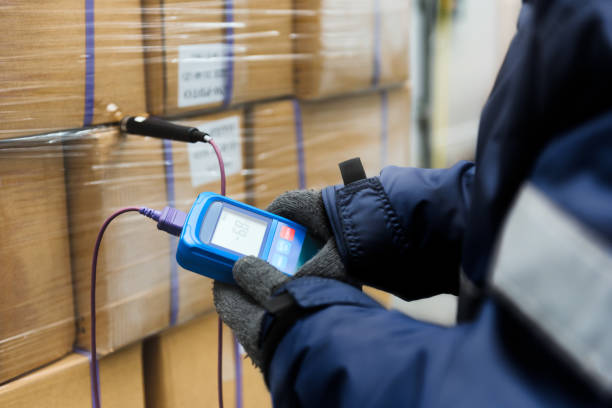In the pharmaceutical industry, ensuring the integrity of products during transportation is crucial, particularly for temperature-sensitive items like vaccines, biologics, and certain medications.
Improper handling and shipping can lead to reduced efficacy, product spoilage, and significant financial losses. To address these challenges, companies must adopt best practices for temperature-controlled shipping.
This article explores essential strategies for optimizing pharma logistics in the realm of temperature-sensitive shipments.
Understanding the Importance of Temperature Control
Temperature control is vital in pharma logistics for several reasons:
- Product Integrity: Many pharmaceutical products require specific temperature ranges to maintain their efficacy. For instance, vaccines often need to be kept between 2°C and 8°C. Deviating from these ranges can lead to chemical degradation, resulting in ineffective treatments.
- Regulatory Compliance: Regulatory bodies such as the FDA and EMA have strict guidelines governing the transportation of pharmaceuticals. Failing to adhere to these standards can result in penalties and loss of market access.
- Patient Safety: Ultimately, ensuring the proper handling and transportation of temperature-sensitive products is essential for patient safety. Compromised products can lead to adverse health effects, which can harm a company’s reputation and lead to costly recalls.
Key Best Practices for Temperature-Controlled Shipping
1. Implement Robust Packaging Solutions
The first line of defense in temperature-controlled shipping is effective packaging. The choice of packaging materials and methods can significantly impact temperature maintenance during transit.
- Insulated Containers: Use insulated boxes or containers that can maintain the required temperature for extended periods. Consider using materials like polystyrene foam, which offers excellent thermal insulation.
- Phase Change Materials (PCMs): Incorporate PCMs in your packaging solutions. These materials can absorb and release thermal energy, helping to stabilize temperatures during transit.
- Temperature Monitors: Integrate temperature monitoring devices within the packaging to continuously track conditions. These devices provide real-time data and alerts if the temperature deviates from the acceptable range.
2. Choose Reliable Shipping Partners
Selecting the right logistics provider is critical for successful temperature-controlled shipping. Look for partners with:
- Experience in Pharma Logistics: Ensure that your logistics provider has expertise in handling pharmaceutical products, especially temperature-sensitive items.
- Temperature-Controlled Facilities: Verify that the shipping partner has temperature-controlled storage facilities and transport vehicles equipped with temperature monitoring systems.
- Established Protocols: Review the partner’s standard operating procedures (SOPs) for handling temperature-sensitive shipments, including packaging, loading, and delivery processes.
3. Utilize Advanced Technology
Technology plays a vital role in enhancing the efficiency of temperature-controlled shipping:
- Track and Trace Systems: Implement GPS tracking and monitoring systems to provide real-time updates on the shipment’s location and conditions. This information allows for proactive interventions if issues arise.
- IoT Devices: Utilize Internet of Things (IoT) devices to monitor temperature and humidity levels throughout the shipping process. These devices can send alerts to logistics teams, enabling timely responses to any deviations.
- Blockchain Technology: Consider adopting blockchain technology for enhanced transparency and traceability in the supply chain. Blockchain can provide an immutable record of the shipment conditions, ensuring compliance and accountability.
4. Train Employees and Stakeholders
Human error can undermine even the best systems and technologies. Regular training for all stakeholders involved in the shipping process is essential:
- Training Programs: Develop comprehensive training programs that educate employees on the importance of temperature control, proper handling techniques, and emergency procedures.
- Collaboration with Partners: Conduct joint training sessions with logistics partners to ensure a shared understanding of best practices and expectations.
5. Establish Clear Standard Operating Procedures (SOPs)
Creating and enforcing SOPs for temperature-controlled shipping is crucial for consistency and reliability:
- Documentation: Clearly document every step of the shipping process, including packaging, handling, transportation, and storage.
- Monitoring Procedures: Establish procedures for monitoring temperature during transit, including how to respond to temperature excursions.
- Continuous Improvement: Regularly review and update SOPs based on feedback, technology advancements, and changes in regulations.
6. Conduct Regular Audits and Assessments
Regular audits of your temperature-controlled shipping processes can help identify areas for improvement:
- Internal Audits: Conduct internal assessments to evaluate compliance with established SOPs and identify any gaps in the process.
- Third-Party Audits: Consider engaging third-party auditors to provide an unbiased evaluation of your logistics operations and suggest improvements.
7. Develop Contingency Plans
Despite best efforts, unforeseen circumstances can occur. Having contingency plans in place can mitigate risks associated with temperature excursions:
- Emergency Response Procedures: Develop and communicate procedures for responding to temperature deviations, including notification protocols and corrective actions.
- Backup Transportation Options: Establish relationships with alternative logistics providers to ensure continuity of service in case of disruptions.
Conclusion
Temperature-controlled shipping is a critical aspect of pharma logistics that directly impacts product integrity, regulatory compliance, and patient safety.
By implementing best practices such as robust packaging solutions, reliable shipping partnerships, advanced technology utilization, comprehensive training, and continuous improvement strategies, pharmaceutical companies can ensure the successful transportation of temperature-sensitive products.
As the pharmaceutical landscape continues to evolve, staying ahead of logistics challenges will be essential for maintaining a competitive edge and safeguarding public health.
Also Read
The impact of supply chain disruptions on the pharmaceutical industry
Addressing the counterfeit drug problem with robust supply chains

